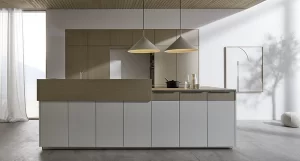Are you considering installing kitchen cabinets? While DIY can be enticing, suggest contracting experts for kitchen cabinet installation in Toronto. Look for trustworthy contractors specialising in kitchen remodels with a track record of conveying high-quality work. Check for licences, certifications, and surveys to guarantee that you are working with trusted specialists.
In this blog post, we will provide steps for a smooth installation of kitchen cabinets. The blog covers everything from prepping the site before installation to understanding the cost involved so you know you are getting the most out of your kitchen renovation.
You may like to read this: Custom Kitchen Cabinets in Toronto – Maximizing Your Storage and Style
How to install kitchen cabinets? – A Complete Procedure
Step 1: Site Preparation
Adequately prep the site before you begin installing kitchen cabinets. Consider these points before starting:
- Clear the Space: Begin by removing all of the room’s existing cabinets, appliances, and furnishings. It will give you plenty of room to work and allow you to see where your new cabinets will go.
- Clean the Space: Before starting the kitchen installation, clean and clear all the dirt. It ensures that your cabinets are level and securely fastened.
- Check for Level: Use a laser or water level to ensure the kitchen’s floor and walls are level and straight. If your site is not level, the cost of installing kitchen cabinets may rise since you will need to purchase more materials to level the space.
- Identify Utilities: Before installing your new cabinets, locate any utility lines or electrical outlets in the walls. It will assist you in not drilling into any cables or pipes when installing your cabinets.
You can be assured of a smooth installation procedure and avoid costly mistakes or delays by taking the necessary steps to properly prepare your site, ready to install new kitchen cabinets.
Step 2: Installing lower kitchen cabinets
- Gather the necessary tools and materials: You’ll need a measuring tape, a level, a screwdriver, a drill, screws, shims, a pencil, and the kitchen cabinets.
- Measure and mark: Determine the height and breadth of your cabinets with a measuring tape, and then mark the plan on the wall with a pencil. Consider any appliances or fittings that may impact cabinet placement. Always follow the designer or manufacturer’s kitchen design to avoid mistakes.
- Locate and mark studs: Locate the wall studs inside the designated area using a stud finder. With a pencil, mark the stud placements on the wall.
- Position the first cabinet: Starting with the corner or end cabinet, place the first base cabinet. Position the cabinet in place, aligning it with the wall plan. If required, use shims to level the cabinet. Screw the cabinet to the wall studs through the cabinet back and into the studs. Some manufacturers recommend screwing the base cabinets together because they have a gap behind the back of the base/lower cabinets to make adjustments if the wall is not 90 degrees.
- Connect additional cabinets: Place the subsequent cabinets next to the first one, ensuring they are level and straight. Use clamps to hold cabinets together tightly. Drill pilot holes and secure the kitchen base cabinets together using screws.
- Repeat the process: Continue installing the remaining cabinets in the same manner. Confirm the cabinets are properly aligned and securely fastened to adjacent cabinets or the wall per the manufacturer’s instructions.
- Adjust and level: Use a water or laser level to ensure cabinets are straight and levelled vertically and horizontally. Adjust the shims as needed to achieve a level installation. Tighten the cabinets to each other using screws.
- Install cabinet shelves and hardware: Once all the cabinets are in place, install the cabinet shelves, drawers, and any required hardware like handles/knobs. Do follow the manufacturer’s instructions.
- Check for adjustments: Double-check the alignment and level of the new kitchen cabinets installed. Make any necessary adjustments by loosening screws, repositioning shims, or using a plane to trim excess material.

You may like to read this: Finding the Luxury Kitchen Designer in Toronto: A Comprehensive Guide
Step 3: Installing upper kitchen cabinets
- Measure and mark: First thing you need to do is, measure the backsplash and mark a point where the bottom of your wall cabinet will start.
- Locate and mark studs: Use a stud finder to locate wall studs and mark their positions on the wall within the cabinet area.
- Attach cabinet hangers: Install cabinet hangers on the wall, following manufacturer instructions. Ensure they align with the marked stud positions. Most European kitchen cabinets, especially from German manufacturers, offer a hanging rail to install wall cabinets, whereas local manufacturers might secure the upper cabinets by screwing them to the wall. So follow the manufacturer’s instructions.
- Lift and hang cabinets: Lift the first upper cabinet, align it with the hanging rail, and hook it onto them. Ensure to secure the upper cabinet to the hanging rails or the wall. Repeat for the remaining cabinets.
- Level and adjust: Use a water or laser level to ensure cabinets are level and plumb. Make adjustments as needed.
- Install shelves and hardware: Attach cabinet doors if you have removed any. Place the cabinet shelves using the metal shelf supports provided by the manufacturer and any other hardware according to the manufacturer’s instructions.
Finally, inspect thoroughly, checking for any imperfections or adjustments needed in the kitchen cabinets. Test functionality, ensuring doors and drawers operate smoothly. Verify that all connections are secure and cabinets are structurally sound.
Cost to Install Kitchen Cabinets in Toronto
The cost of kitchen installation in Toronto can vary widely depending on various factors like the size of the kitchen, the complexity of the project, the quality of materials used, and the contractor or service provider you choose. On average, installing kitchen cabinets costs can vary between a few hundred to a few thousand. We recommend getting a kitchen installed by a professional.
Why Choose ÉSTHETEAK for the best kitchen cabinets in Toronto?
ÉSTHETEAK has partnered with two globally renowned brands, Nolte Kitchens and Raumplus wardrobes/sliding doors. Our partners provide the best of the best German-manufactured kitchen cabinets and doors to make your dream come true to have a kitchen or closet which fits you completely.
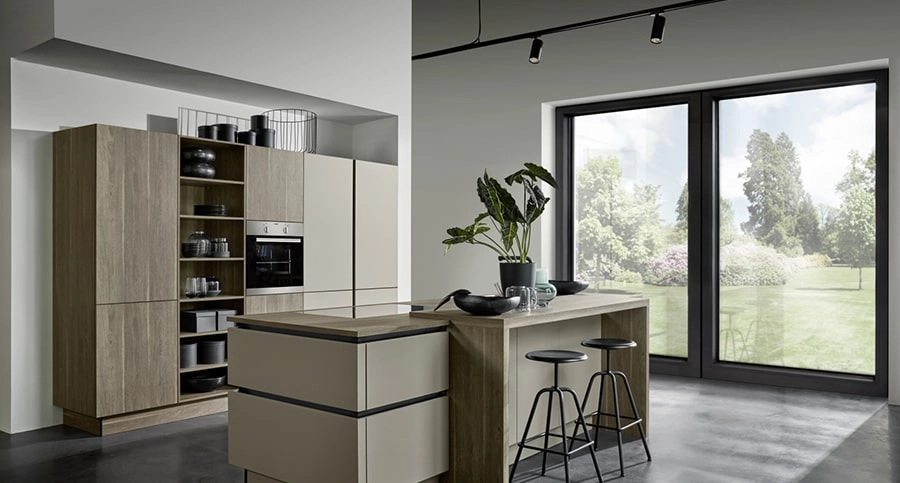
ÉSTHETEAK provides exceptional quality products and believes in providing the best customer experience. We provide you with an after-sales service which very few companies do. We are present at every step, from your first visit to the showroom to designing your kitchen or wardrobe, to the final execution of your project. We strive to achieve ultimate satisfaction by prioritizing your needs and desires. We build our design around you and your aspirations.
Conclusion
By following this guide, you can navigate the process of installing kitchen cabinets with ease. Remember to prioritise quality materials, expert craftsmanship, and attention to detail to achieve a kitchen that meets your functional needs and adds value and beauty to your home. Transform your kitchen into a space that reflects your style and enhances your culinary experiences through a carefully planned and professionally executed cabinet installation.


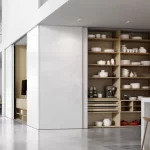
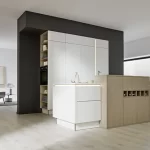


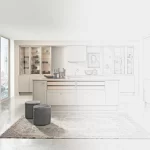


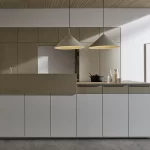

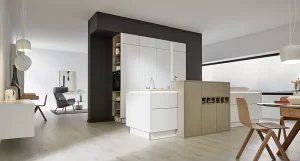
![Kitchen Remodel / Kitchen Renovation in Toronto[Basics + Tips + Cost] Kitchen Remodel / Kitchen Renovation in Toronto[Basics + Tips + Cost]](https://estheteak.com/blog/wp-content/uploads/2023/11/kitchen-remodel-and-kitchen-renovation-in-toronto-300x161.webp)
